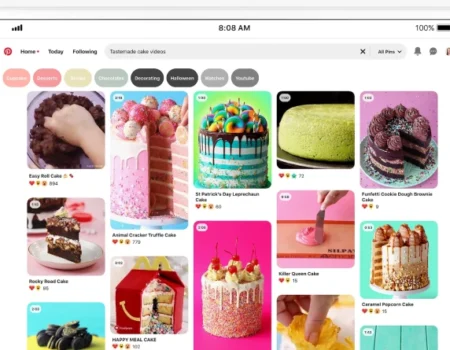What Sets TikTok, Canva, and Leading Marketing Teams Apart [Latest Insights]
Marketing is evolving faster than ever, and the top-performing teams are staying ahead by embracing new trends, technologies, and strategies. What sets them apart? From value-driven content to AI integration and micro-influencer partnerships, these teams are redefining what it means to connect with audiences in 2025. Let’s explore the seven most impactful strategies high-performing marketing teams leverage to dominate the industry this year.
1. Top Marketing Teams Prioritize Value-Driven Content
In 2025, successful marketing teams are doubling down on brand authenticity and customer experience. Last year, around 40% of marketers focused on enhancing their audience’s experience with their brand. This year, that focus has intensified, with nearly a quarter of marketers investing in content that aligns with their core values.
Why? Younger audiences, mainly Gen Z and Millennials, gravitate toward brands that stand for something beyond just selling products. They engage more with companies that reflect their beliefs and priorities.
A prime example is Patagonia’s 2024 “Unfashionable” campaign, which took an unconventional approach. Instead of promoting a new product, the ad encouraged consumers to buy less clothing, emphasizing sustainability and mindful consumption—values deeply embedded in Patagonia’s brand. This type of content builds deeper trust and loyalty, proving that value-driven marketing is more than just a trend—it’s the future.
2. Winning Marketing Teams Are Prioritizing Visual Content
Visual content continues to dominate digital marketing from TikTok to Instagram and live-streaming platforms. In 2024, short-form videos, images, and webinars were among the most widely used content formats—and this trend is only accelerating in 2025.
Consider these numbers: Nearly 30% of marketers say short-form video is their most popular content format, while 21% claim it delivers the highest ROI. Surprisingly, images have surpassed interviews, blog posts, and live streaming as one of the most widely used content types.
This shift makes sense. With consumers spending a significant portion of their time on social media—where content is mainly visual—brands that embrace visual storytelling are capturing more attention and engagement.
But it’s not just about being present on these platforms. The most effective marketers focus on authentic, trend-driven, and interactive content that resonates with their audiences. They also balance social media efforts with owned platforms, like newsletters, to maintain direct relationships with their audience beyond social algorithms.
In 2025, the marketers who succeed will be those who blend creativity, authenticity, and strategic distribution to maximize the impact of their visual content.
3. Top Marketing Teams Are Fully Integrating AI
Unsurprisingly, AI continues to reshape marketing, but the highest-performing teams aren’t just experimenting—they’re embedding AI deeply into their workflows, strategies, and content creation processes.
AI is no longer just a tool for efficiency; it’s becoming a core part of decision-making, campaign execution, and customer engagement. The teams that leverage AI to streamline workflows, automate processes, and enhance creativity are the ones pulling ahead.
In 2025, marketers plan to:
- Use AI for multi-modal campaigns (20%)
- Automate marketing tasks with AI agents (20%)
- Create AI-generated content, including copy, images, and concepts (43%)
- Utilize AI for brainstorming (26%)
- Leverage AI for data analysis and reporting (35%)
Nearly half of marketers now have a clear AI strategy, indicating that AI isn’t just an option—it’s a competitive advantage.
For those who’ve been hesitant, now is the time to explore AI-driven innovation. Whether it’s automating routine tasks, personalizing customer interactions, or optimizing campaign performance, AI is transforming the way marketers work—and those who embrace it will stay ahead.
4. High-Performing Teams Will Prioritize Micro-Influencers
More marketers are turning to micro-influencers—those with 10k-50k followers—because they offer something larger influencers often lack: deep audience trust and engagement. In 2024, 45% of marketers reported their best results came from micro-influencers, far surpassing macro- and mega-influencers.
Why? Micro-influencers foster genuine connections with their followers, leading to higher engagement rates and more authentic endorsements. They’re also a cost-effective choice, allowing brands to diversify their influencer collaborations and target niche audiences more effectively. In 2025, expect even more marketing teams to shift their budgets toward these high-trust partnerships.
5. Smart Marketers Will Maximize Content Repurposing
Creating fresh content for every platform is time-consuming and unnecessary. The best marketing teams in 2025 will focus on repurposing existing content to expand reach without doubling their workload.
- A webinar can become a blog post.
- That blog post can be turned into LinkedIn carousel slides.
- Key points from the slides can be repackaged as short-form video clips.
- Those clips can then be adapted into TikTok, Instagram Reels, and YouTube Shorts.
This strategy isn’t just about efficiency—it’s about ensuring consistent messaging across multiple touchpoints while meeting audiences where they spend the most time. Marketers who master content repurposing will maximize impact with minimal extra effort.
6. Marketing Teams Will Prioritize Social Media Specialists
Gone are the days when social media was just an afterthought in a marketing strategy. In 2025, high-performing teams are treating it as a specialized discipline, hiring dedicated experts to optimize content and engagement on each platform.
The top three roles marketing leaders plan to recruit for this year include:
- Content creator (14%)
- Social media coordinator (13%)
- Social media strategist (13%)
As platforms evolve, so do job titles. We now see specialized roles such as TikTok Content Strategist and LinkedIn Audience Development Manager, reflecting the need for tailored approaches on different platforms. Instead of a generalist managing all social channels, brands build teams focusing on platform-specific trends, algorithms, and engagement strategies.
With social media algorithms changing constantly and new features emerging, businesses that invest in specialists will gain a competitive edge by staying ahead of trends and maximizing audience engagement.
7. Data-Driven Marketing Will Be Non-Negotiable
In 2025, marketing success hinges on data-driven decision-making. Nearly one-third of marketers (29%) consider the increasing reliance on data the most significant industry shift, while another 25% emphasize its importance in proving ROI and business value.
But it’s not about collecting more data—it’s about collecting the correct data and turning insights into action. The best marketing teams are moving beyond vanity metrics and focusing on numbers that directly impact business outcomes.
A key shift is also happening internally: Data is no longer locked away with analysts. Top-performing companies ensure that marketers at every level have access to dashboards and analytics tools, empowering them to make real-time, informed decisions.
The gap between data-driven teams and those relying on guesswork is growing fast. In 2025, marketing teams that leverage data for personalization, campaign optimization, and performance tracking will outpace their competition.
These seven trends highlight how top marketing teams are staying ahead in 2025. Which strategies are you already using, and where do you see opportunities to refine your approach? Even small steps toward these trends can create significant growth and competitive advantage over time.







